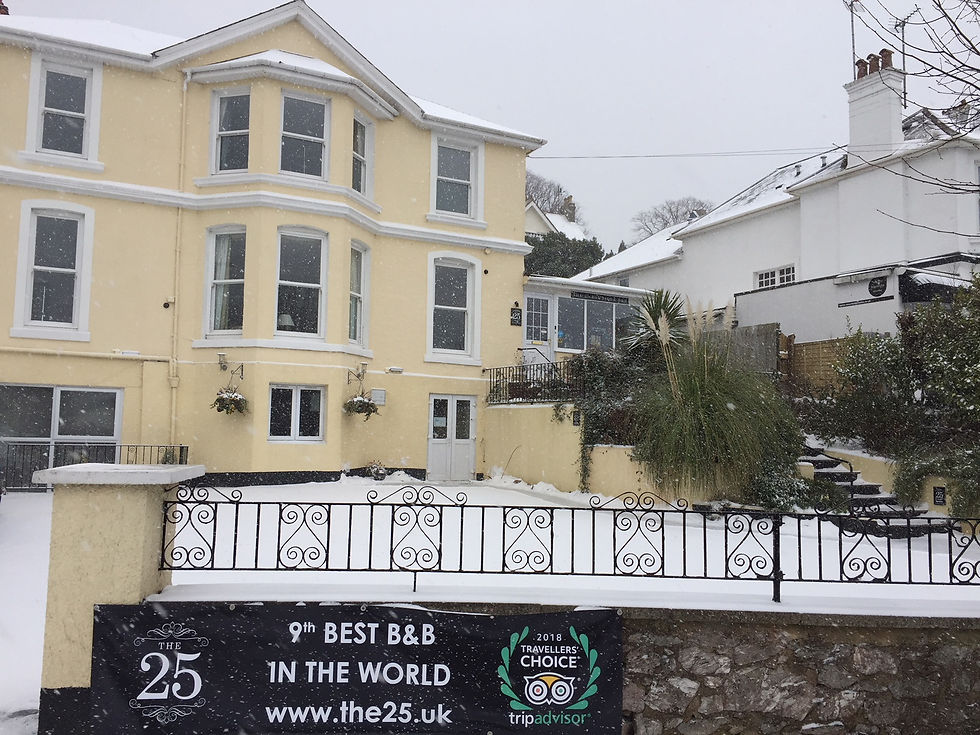Snow on the English Riviera – what!?!
- Andy
- Mar 2, 2018
- 2 min read


This week has seen a once in a generation event – snow in Torquay! – all due to the “Beast from the East”.
We have apparently not had a snowfall like this since 1978 (see photo of the old Glenross Hotel from that year compared to now), some are saying for as much as seventy years! In the three and a half years we’ve been here, we’ve had nothing more than about twenty flakes! We generally don’t even get frosts very often due to the sheltered position of Torbay with it’s protective curve, and the Dartmoor hills sheltering us on the other side. Hence all the tropical plants and palm trees you’ll see around town.
Snow rarely falls when the temperature is above 4°c, and it needs to be below that to settle. We rarely see those kind of temperatures, and the salty sea air also helps keep it at bay.
Needless to say, all our guests for this weekend have had to re-book alternate dates in the coming weeks. Even if the snow clears rapidly here, much of the country also has bad snow, making travelling conditions difficult, and last night the main road into Torquay via “Telegraph Hill” had to be closed as it was impassable. Most of the restaurants and tourist attractions have been forced to close either due to lack of staff or lack of customers, and some places like Cockington are cut off.
On average, some areas in the UK see as many as 25 days of lying snow a year. Between 1979 and 2000, the English Riviera saw no lying snow at all, and the South of Devon most years, also less than three days a year on average, always less than ten, but further out, this rises on the higher grounds like over Dartmoor.
1947 was the snowiest winter of the century in the UK. Between 22nd January and 17th March, snow fell every day somewhere in the country! My dad was born on 19th March that year and my grandad had to help the midwife through terrible snow.
The deepest recorded snowfall was also in March 1947 in Ruthin in North Wales at 1.65m. I knew there was a reason we moved from Wales.
The snowiest place in the UK is perhaps not surprisingly Scotland, with 52 days of snow on average annually with Cairngorn topping the charts with 76 days per year on average between 1981 and 2010.
Snow is most likely to fall in January and February so the very occasional white Christmas or snowfall in March is not uncommon at this time of year.
We’d already bought all our fresh food, meat, milk, eggs and so on for the weekend so we’ve got plenty to eat, the heating is on, and Patsy is curled up asleep in her basket.
I hope wherever in the UK you are right now you’re warm and safe too. Rather than going out in the bad weather, use your time wisely and pop a review on TripAdvisor / Facebook / Google for us, or send us a pic of your snow scene and mention @The25Torquay on Facebook, Twitter or Instagram.
See you soon when the sunshine returns to the English Riviera.
Comentarios